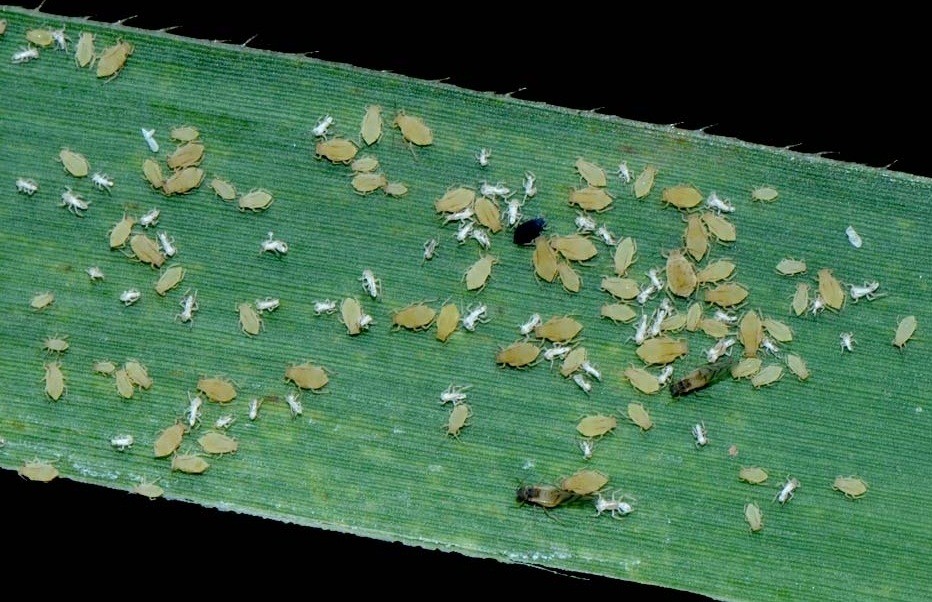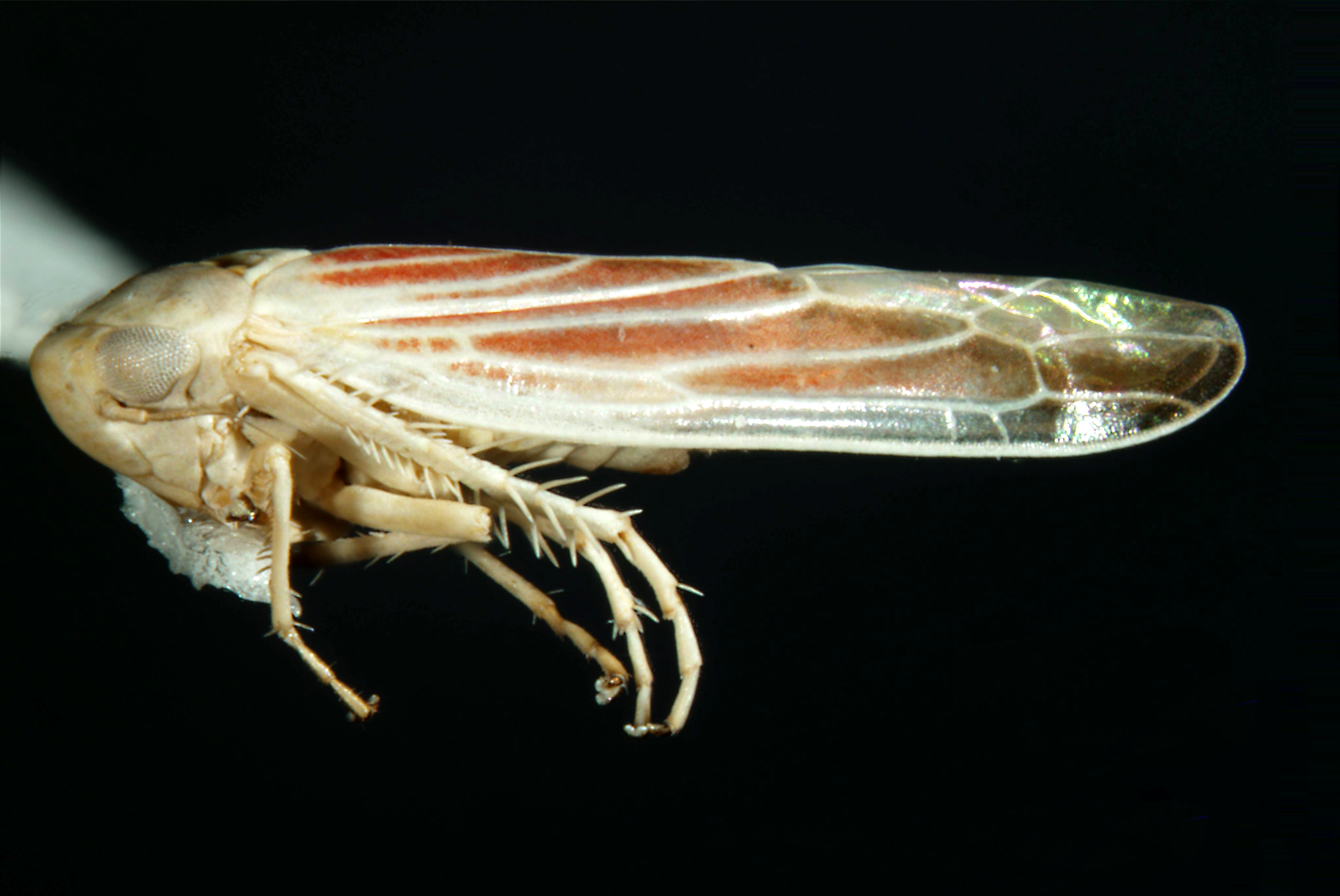Alerts
Sugarcane Aphid

Source: http://www.nbaii.res.in/insectpests/Melanaphis-sacchari.php
Read Article from chron.com
Ecological Threat: The aphid Melanaphis sacchari is an encroaching invasive species is a pest of sugarcane and sorghum and recently has become a pest of concern. It was first found in Hawaii in 1896 and reached Florida in 1977 and Louisiana in 1999. Large scale surveys have been continuously performed over the years and just this month it was found in Texas! The aphid alone can cause damage to sugarcane; but what makes the aphid more of a threat is that it carries the phytoplasma that carries Sugarcane Yellow Leaf disease (SCYL). The disease can also be transmitted by infected seedcane. Studies have shown that there is no thermal treatment for removing the virus that causes SCYL from infected sugarcane, making the infected crops unusable. Continuation of large-scale surveys will help establish the distribution of M. sacchari in Texas. Thankfully sugarcane producing areas of Texas are far south from point of entrance on the eastern border; but the threat of this aphid in Texas is real.
Red-Streaked Leafhopper

Photographer: Chris Wilson
Source: TISI Museum
Ecological Threat: Larvae and adults are grass-feeding insects. However, it has been documented all over Southeast Asia feeding on sugarcane crops. Not only does the Red-Streaked Leafhopper feed on sugarcane but it transmits a virus phytoplasma that is lethal to the plant. Over the years, this small insect has cost countries like Thailand, billions of dollars in sugar cane production. TISI has now documented this insect in 15 counties in Texas. Also, the Red-streaked Leafhopper has been found near sugarcane fields in Texas; which this state alone contributes millions of dollars in sugarcane for the United States, making the presence of this insect quite alarming. Over half of the state of Louisiana is dedicated to sugarcane production, if this leafhopper were to reach the state and transmit the deadly White Leaf Phytoplasma to LouTISIana's sugarcane, the damage could be in the billions just like Southeastern Asia.
Angiostrongylus cantonensis

Angiostrongylus cantonensis is an invasive nematode of rats that infect the lung arteries. It is transmitted by the invasive Giant East African Snail (Achatina fulica) and the invasive Channeled Apple Snail (Pomacea canaliculata) along with numerous potential native snail hosts available in the United States. It was first discovered in New Orleans in 1987, carried in by infected Norway Rats that came off of the foreign barges and has since been found in several mammal species in Louisiana and some mammals in Florida. This parasites can be transmitted to humans by consuming raw or undercooked snails or paratenic (temporary) hosts like freshwater shrimp in Southeast Asia, shrimp in the United States are not carriers of this parasite. When A.canontensis is present in humans the worms migrate to the brain where they try to mature before they enter the lungs; however, since humans are not the intentional hosts the worms often die in the brain. What makes this parasite dangerous is it can be up to 8 weeks before they die off in the brain meninges and can cause serious brain damage or even death.
Asian Citrus Psyllid

Photographers: M.E. Rogers and M. Luque-Williams
Source: http://www.cdfa.ca.gov/plant/acp/
Ecological Threat: Diaphorina citri are small brownish insects, growing to only about 1/8 inch in length, and usually feed on the underside of leaves. The nymphs are generally yellowish-orange in color and feed exclusively on new growth. Alone Diaphorina citri is a pest of 25 citrus genera in the family Rutaceae with a preference of Citropsis (cherry oranges), Citrus (orange, lemon, lime, grapefruit, kumquats etc.) and Murraya (curry, orange jasmine and jessamine) species; but this insect also vectors a citrus-killing disease. The coupling of the Asian citrus psyllid with the phloem-inhibiting bacteria, Candidatus liberibacter asiaticus (Citrus Greening Disease/Huanglongbing)is a huge threat to the citrus growers in the United States. This bacteria causes the citrus fruits to asymmetrical, small, abnormally bitter and very acidic; making the fruits worth nothing due to the poor size and quality. In Florida, Diaphorina citri transmitting Huanglongbing (HLB) has forced growers to produce indoors, severely limiting their fruit production and financial security . In late 2012, the presence of HLB was confirmed in south Texas, where some orchards are now quarantined to prevent the infection from spreading.
 Texas Invasive Species Institute
Texas Invasive Species Institute